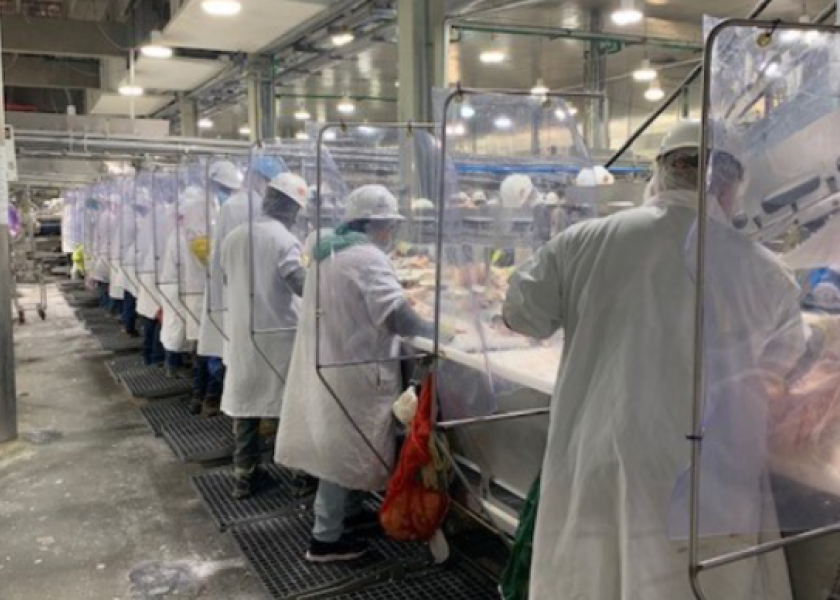The Biden administration announced Monday it will allocate $1 billion to expand independent beef, pork and chicken processing in an effort to increase competition and reduce costs for consumers.
The White House said the plan will boost meatpacking competition and boost profits for livestock producers while reducing costs for consumers. President Joe Biden plans to meet Monday with farmers, ranchers, and independent processors to roll out the initiative, tapping the $1.9 trillion American Rescue Act to fund the effort.
Biden, whose administration has blamed a near-monopoly in meatpacking for sharp increases in U.S. food costs, signed an executive order in July seeking to increase competition.
Four large meatpacking companies control 85% of beef processing and four firms control 54% of poultry processing and about 70% of pork processing, the Biden administration said in a statement.
Biden's plan calls for providing financing, worker training and technical assistance to independent companies expanding meat processing capacity.
Biden also wants to give producers selling their cattle more information about pricing, address consumer labeling issues, and strengthen a law designed to combat meatpacker abuses.
"The meatpackers and processors buy from farmers and sell to retailers like grocery stores, making them a key bottleneck in the food supply chain," the White House said in a statement.
"When dominant middlemen control so much of the supply chain, they can increase their own profits at the expense of both farmers — who make less — and consumers — who pay more," it said.
The White House said it used information from 450 comments to the U.S. Department of Agriculture about increasing meatpacking competition to help develop its initiative. Some highlights of the Biden policy initiative include providing:
- $375 million in "gap" financing to jumpstart meat processing projects that "truly expand capacity outside the largest meat and poultry processors." The agriculture department will provide $150 million in its first phase for roughly 15 projects, and another $225 million in the second phase.
- Up to $275 million in capital for banks to provide loans and other financing with favorable terms for independent processors investing in cold storage, specialized equipment and other needs.
- $100 million to provide loan guarantees for more than $1 billion in loans.
- $100 million to train workers for well-paying, safe jobs.
- $50 million to provide technical assistance and research that will lower barriers for entrepreneurs, independent companies and others looking to add meatpacking processing. The effort will help businesses better understand environmental, food safety and worker safety requirements.
- $100 million to reduce overtime and holiday inspection costs for small and very small poultry, meat and egg processing plants keep up with unprecedented demand. The initiative is expected to cut fees 30% to 75%.
The administration said in a statement that the concentration of production in the meatpacking industry makes it susceptible to shocks — such as the global pandemic, fires or cyberattacks — that temporarily shutter processing plants.
The reduced slaughter capacity drives down prices for producers while pushing consumers' costs higher, it said.
"Our overreliance on just a handful of giant processors leaves us all vulnerable, with any disruptions at these bottlenecks rippling throughout our food system," it said.
For example, 50 beef slaughter plants owned by just a handful of companies currently process nearly all the cattle in the U.S., the administration said.
The agriculture department will issue "Product of USA” labeling rules this year so that consumers can better understand where their meat comes from, the administration said. Now, livestock raised outside of America can be labeled as a U.S. product if it's processed in this country.
"We believe this could make it hard for American consumers to know what they are getting," the administration said, adding that the agriculture department has already begun "its top-to-bottom review of the current labeling rules."















